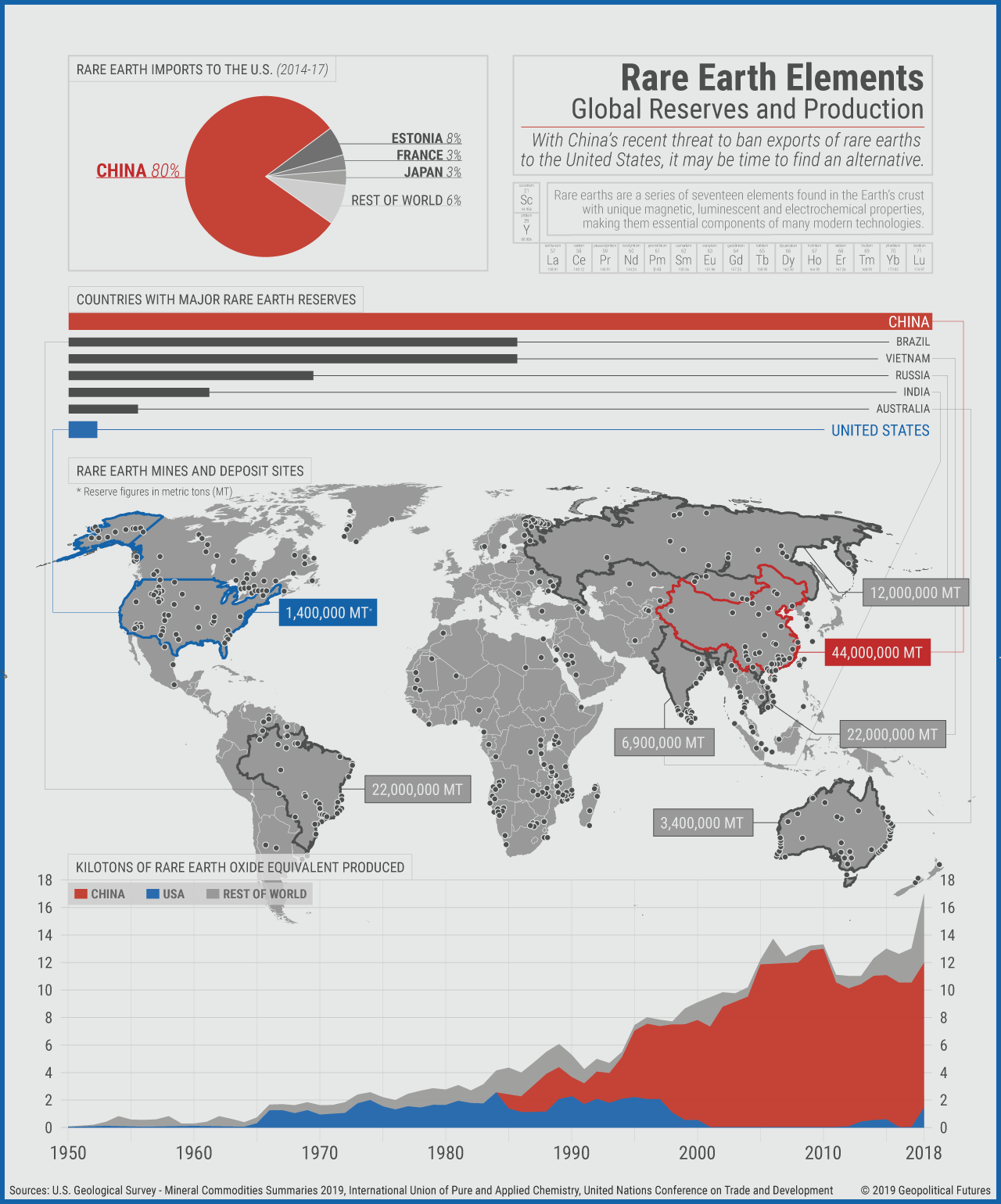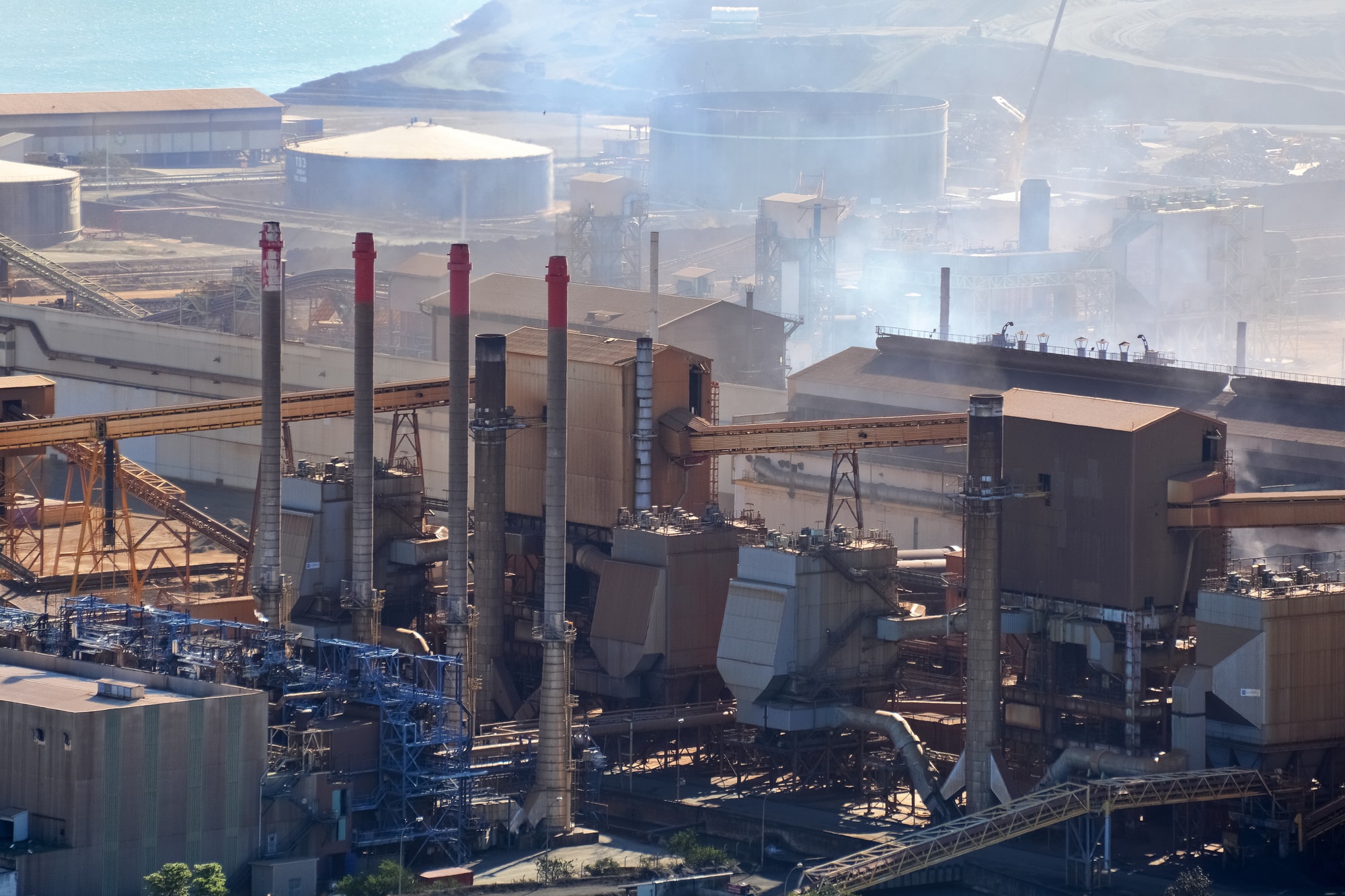A-level Business and Economics

(Rare Earth Elements Annual Production [1]Link opens in a new window)
Rare-earth metals, owing to their various properties, find applications in a wide range of industries. These applications include permanent magnets, metal alloys, phosphors, catalysts, polishing, and glass additives [2]Link opens in a new window.
Rare-earth permanent magnets are expected to be the prime growth market over the next five to ten years. The major rare-earth elements that are used in the permanent magnet application are neodymium, praseodymium, dysprosium, terbium, and yttrium.These metals possess special properties, such as remanence, high coercivity, which keeps the permanent magnets from losing their magnetivity even after long periods. These magnets find major applications in the automotive market, and their demand is dependent on this market. The rare-earth permanent magnets find use in both conventiona automtive as well as hybrid vehicles. In fact, the hybrid electric vehicle (HEV) market is expected to drive a stronger growth for rare-earth magnets in the near future as they use more rare-earth magnets per vehicle when compared to conventional automotive. Generally, a hybrid car contains 650 grams or 1,000 grams of neodymium [2]Link opens in a new window .
The application of rare-earth magnets in wind turbines is expected to be another major growth market over the long term. The latest offering of direct drive wind turbines, where the use of rare-earth magnets allows the gearbox to be removed from the turbine, has greatly decreased weight and maintenance issues [2]Link opens in a new window .
Along with the above applications, rare-earth magnets are widely used in major consumer and industrial electronic applications, such as smartphones, acoustic speakers, hard disk drives, due to their high performance to size ratio and high magnetic strength. The usage of rare-earth metals in permanent magnets is expected to grow by 12% to 14% in the next five to ten years [2]Link opens in a new window .
The overall rare-earth metals market is projected to grow from USD 5.3 billion in 2021 to USD 9.6 billion by 2026, at a CAGR of 12.3% during the forecast period. The increasing use of rare-earth elements that are used in the permanent magnet application are likely to drive the rare-earth metals market. APAC is the fastest-growing market for rare-earth metals due to increase in production and consumption in China. Significant usage of permanent magnets offer a huge impetus to these advanced materials, are expected to drive the rare-earth metals market in the region [2]Link opens in a new window .
Rare Earth Elements Education Resources for Business and Economics
How one rare earth mine could change the U.S. dependence on China
Stockholm Environment Institute (SEI)- ‘The geopolitics of Chinaʹs rare earths: a glimpse of things to come in a resource-scarce world?’
MIT Podcast- ‘Rare Earths for the Common People’
Environmental Justice Atlas- ‘Rare Earth Mining of Chalco, Yulin, Guangxi, China’
Huber and Steininger (2022)- ‘Critical sustainability issues in the production of wind and solar electricity generation as well as storage facilities and possible solutions’
Sustainalytics- ‘Implications of the use of rare-earth elements in the wind energy market’
International Institute for Sustainable Development (IISD)- ‘Green Conflict Minerals: The fuels of conflict in the transition to a low-carbon economy’
The Guardian- ‘Dirty, dangerous and destructive – the elements of a technology boom’
Smithsonian Mag- ‘Podcast: All About Rare Earth Elements, the ‘Vitamins’ Of Modern Society’

(Picture from Harvard International Review [3]Link opens in a new window)
Here, we summuarized education resources for teaching Rare Earth Elements in the Chemistry course in the following examboards:
EDEXCEL
Business
Theme 4: Global Business
4.1.2 international trade and business growth
4.1.3 Factors contributing to increased globalisation
4.1.4 Protectionism
4.1.5 Trading Blocs
Economy A (2015)
3.4 Market Structures
3.4.5 Monopoly
3.6 Government intervention
Oxford, Cambridge and RSA Examinations (OCR)
Business (H431)
Corporate Social Responsibility (under ‘Business Objectives and Strategy’) - (Page 8)
External influences (Page 14). Including:
Demand and supply
Technological factors
Ethical factors
Environmental factors
International Baccalaureate (IB)
Economics
Unit 4: The Global Economy
4.7 Sustainable Development
For Further Curriculum information, please visit the following examboard website.
EDEXCEL
https://qualifications.pearson.com/en/home.html
Oxford, Cambridge and RSA Examinations (OCR)
https://ocr.org.uk/
International Baccalaureate (IB)
https://www.ibo.org/
